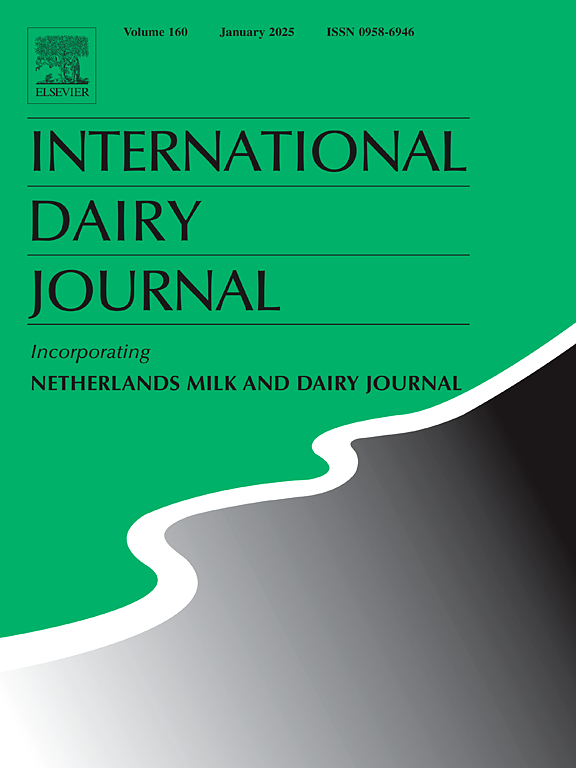模拟冷藏巴氏奶中嗜冷细菌产生脂肪酶和蛋白酶
IF 3.1
3区 农林科学
Q2 FOOD SCIENCE & TECHNOLOGY
引用次数: 0
摘要
本研究评价了冷藏巴氏奶中嗜冷菌产生脂肪酶和蛋白酶的情况。样品在4、6、8和10°C下储存10天,以模拟包括滥用温度在内的冷藏储存。结果表明,尽管巴氏灭菌显著减少了细菌数量,但部分嗜冷菌群体能够在冷藏过程中存活和生长。此外,在10天的分析期内,酶活性主要发生在滞后期和指数生长阶段的较高温度下(8°C和10°C),导致样品变质。因此,该研究强调了严格控制冷藏温度在巴氏杀菌牛奶储存过程中的重要性。一个由三个微分方程组成的数学模型能够成功地描述细菌的生长和脂肪酶和蛋白酶的产生。这种方法可以为冷藏巴氏杀菌牛奶的变质提供有用的见解。本文章由计算机程序翻译,如有差异,请以英文原文为准。
Modeling lipase and protease production by psychrotrophic bacteria in refrigerated pasteurized milk
This study evaluated the lipase and protease production by psychrotrophic bacteria in refrigerated pasteurized milk. Samples were stored at 4, 6, 8, and 10 °C during 10 days to simulate refrigerated storage including abuse temperatures. The results demonstrated that although the pasteurization reduced significantly the bacterial counts, part of the psychrotrophs population is able to survive and grow during refrigeration. Moreover, enzymatic activity occurred mainly at the higher temperatures (8 and 10 °C) during the lag and exponential growth phases throughout the 10-day analysis period, contributing to the samples spoilage. Thus, the study reinforces the importance of a strict control of refrigeration temperature during storage of pasteurized milk. A mathematical model comprised of three differential equations was able to describe successfully the bacterial growth and lipase and protease production. This approach can provide helpful insights regarding spoilage of refrigerated pasteurized milk.
求助全文
通过发布文献求助,成功后即可免费获取论文全文。
去求助
来源期刊

International Dairy Journal
工程技术-食品科技
CiteScore
6.50
自引率
9.70%
发文量
200
审稿时长
49 days
期刊介绍:
The International Dairy Journal publishes significant advancements in dairy science and technology in the form of research articles and critical reviews that are of relevance to the broader international dairy community. Within this scope, research on the science and technology of milk and dairy products and the nutritional and health aspects of dairy foods are included; the journal pays particular attention to applied research and its interface with the dairy industry.
The journal''s coverage includes the following, where directly applicable to dairy science and technology:
• Chemistry and physico-chemical properties of milk constituents
• Microbiology, food safety, enzymology, biotechnology
• Processing and engineering
• Emulsion science, food structure, and texture
• Raw material quality and effect on relevant products
• Flavour and off-flavour development
• Technological functionality and applications of dairy ingredients
• Sensory and consumer sciences
• Nutrition and substantiation of human health implications of milk components or dairy products
International Dairy Journal does not publish papers related to milk production, animal health and other aspects of on-farm milk production unless there is a clear relationship to dairy technology, human health or final product quality.
 求助内容:
求助内容: 应助结果提醒方式:
应助结果提醒方式:


